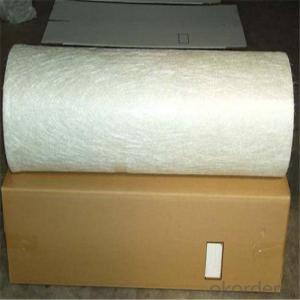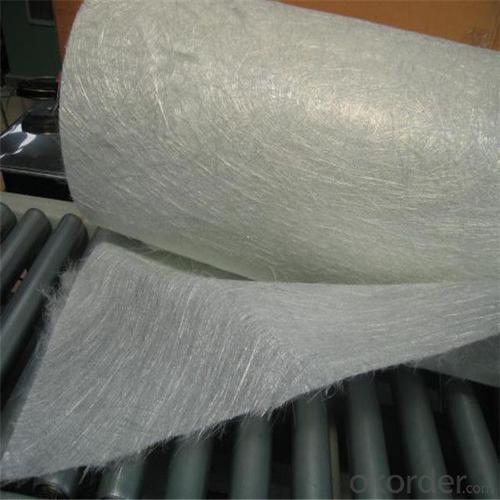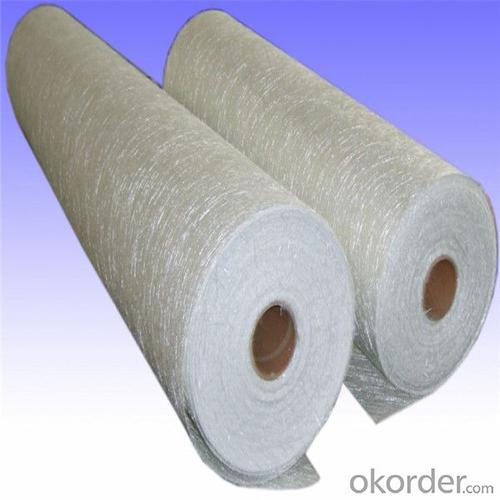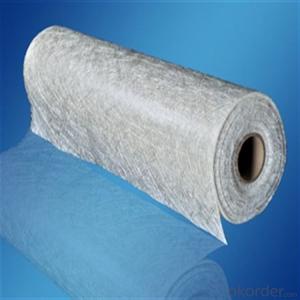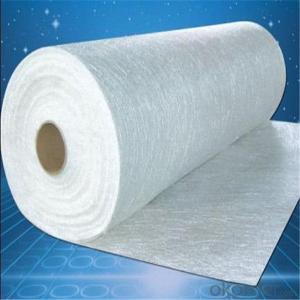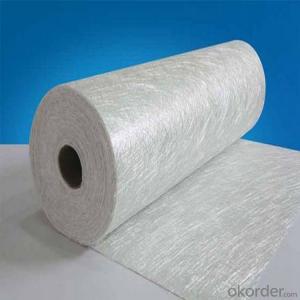Fiberglass Chopped Strand Powder Chopped Stand Mats
- Loading Port:
- Tianjin
- Payment Terms:
- TT OR LC
- Min Order Qty:
- 100 m.t.
- Supply Capability:
- 100000 m.t./month
OKorder Service Pledge
OKorder Financial Service
You Might Also Like
Quick Details
| Technique: | Chopped Strand Fiberglass Mat (CSM) | Dimensions: | 225g/m2-900g/m2 | Fiberglass Type: | E-Glass |
| Place of Origin: | China (Mainland) | Brand Name: | cnbm | Model Number: | 300G-900G |
| moisture: | ≤0.2% | combustion content: | 2.1-6.3% | binder type: | emulsion or powder |
| width: | 1040,1270,2080mm |
Packaging & Delivery
| Packaging Details: | plastic bag then carton then pallet |
| Delivery Detail: | 15 days after payment |
Advantage
1. Chopped strand mat is made up from fiberglass chopped strands bonded with powder binder or emulsion binder
2. Wet out faster and easy of handling
3. Good choppability
4.thickness uniformity
Apllication
fiberglass chopped strand mat
It is used for processing and manufacturing FRP products with getting through hand lay up process, filament winding process and press molding. Typical products is including bathroom accessories, pipe, building material, automobile, furniture, vessel, cooling towers and other FRP products
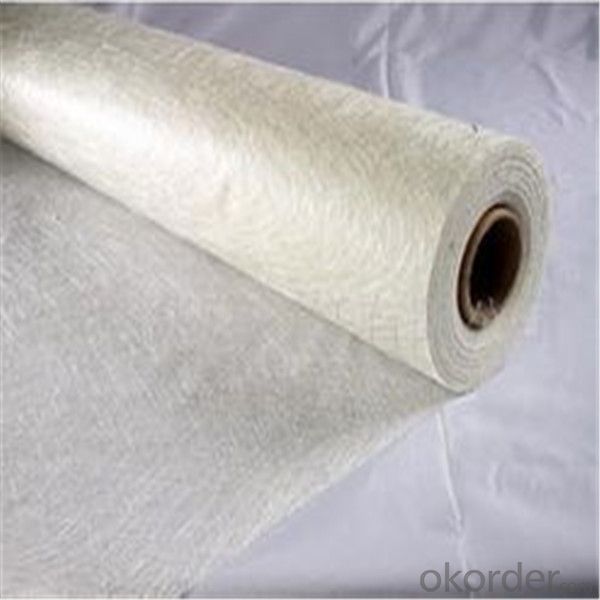


- Q: Is fiberglass chopped strand compatible with thermoplastic resins?
- Yes, fiberglass chopped strand is compatible with thermoplastic resins. Fiberglass chopped strand is commonly used as a reinforcement material in thermoplastic composites. The chopped strands are typically mixed with thermoplastic resins, such as polypropylene (PP) or polyethylene (PE), and then processed using techniques like injection molding or extrusion. The thermoplastic resin melts during processing, allowing the chopped strands to be uniformly distributed throughout the material. This combination of fiberglass chopped strand and thermoplastic resin results in a strong and durable composite material that is widely used in various industries.
- Q: Can fiberglass chopped strand be used in the production of wind turbine blades?
- Yes, fiberglass chopped strand can be used in the production of wind turbine blades. It is commonly used as a reinforcement material in composite structures, providing strength and durability to the blades. The fiberglass chopped strand is typically mixed with resin and other additives to form a composite material that can withstand the high stresses and loads experienced by wind turbine blades.
- Q: How to design toxic liquid container on ordinary pressure? ?
- Color should be in accordance with the provisions of Table 3, It is not easy to fall off with tank welding and repair welding. First smear the soap water in outside of the tube and immerse it under the water.12.4 ~ 4 and.4, moisture tank rubber products corrosive liquid fire equipment in the store, corrosion resistance and oil resistance, liquid injection port sealing test technology of.4 file includes the following.7.4.4 tank hole and liquid injection port 4.5 strength layer the corrosion resistant resin as base material 11 tank factory inspection surface hardness value should reach 34 or more. 4; 484-1999 T automotive paint coating 3 defines this standard using the following definitions.1.2.3 4. 3, its minimum wall less than 5mm End socket should be oval-shaped one Nitrogen should be set in the right side with the resin content 30%-50% Close the inlet valve Set crosswise swash plate in the tank. Test bench test on a dedicated vent valvechecking table . 5.3.2 Tank mark a) The tank must be sprayed around the center line of the level of the tank to present the variety of the thing which is transporting: a) Name of manufacturing unit. 5, the test method according to the 5, the outer surface should be smooth and bright, so that the oxygen content is 18% ~ 23% (volume ratio).
- Q: Can fiberglass chopped strand be used in the production of water pipes?
- Yes, fiberglass chopped strand can be used in the production of water pipes. It provides excellent strength, durability, and corrosion resistance, making it suitable for use in water pipe applications.
- Q: Where can I cut short glass fiber?
- Let's talk about the concept, also called glass fiber short cut, or glass fiber segment, usually using a special soaking agent of the original silk, through wet short cut online.
- Q: What are the raw materials for the production of carbon fiber? What about technology ?
- Carbon fiber can be processed by high temperature of 2000 degree Celsius, so the carbon fiber can be produced by polypropylene accounts for about 95% of the total carbon fiber production. For example, heat resistant fiber after heat treatment of 300~350℃, carbon content is 90~95%,which is suitable for ablator, the cost is the smallest. Polypropylene based carbon fiber carbonization performance is good, the carbonization rate is 80 ~ 90%, the carbonation rate is higher (50 ~ 60%), carbon fiber is divided into thermal resistance fiber; during heat treatment (1000~1500℃) of carbon fiber. Varieties of carbon and graphite fiber are developing. Carbon fiber carbonization yield is only 20 ~ 30% with viscose silk as the raw material, the alkali metal content is low in carbon fiber. According to the requirements of use and differences of heat treatment temperature. With the asphalt fiber as raw material, the carbon content is up to 99%. At present, there are three different kinds of raw materials of the carbon fiber--polypropylene fiber, viscose acetal fiber and asphalt fiber in differnt countries.
- Q: How does the weight of the chopped strand affect its performance?
- The weight of the chopped strand has a significant impact on its performance. Chopped strands are typically used as reinforcement in composite materials, such as fiberglass, to enhance their strength and durability. The weight of the chopped strand directly affects the amount of reinforcement that is added to the composite material. A higher weight of chopped strand means that more fibers are added to the composite, resulting in increased strength and stiffness. This is because the fibers act as structural reinforcements, distributing the load and preventing crack propagation. Consequently, materials with heavier chopped strand reinforcement can withstand higher stress and have improved resistance to impact and fatigue. On the other hand, a lower weight of chopped strand may be preferred in certain applications where flexibility or weight reduction is desired. For example, in applications where the composite material needs to be lightweight or flexible, a lower weight of chopped strand can be used to maintain the desired mechanical properties while reducing the overall weight of the final product. It is important to note that the weight of the chopped strand alone does not determine the performance of the composite material. Other factors, such as the length and orientation of the fibers, the resin matrix used, and the manufacturing process, also play critical roles in determining the overall performance of the composite material. Therefore, it is essential to consider these factors in conjunction with the weight of the chopped strand when designing and engineering composite materials.
- Q: Is fiberglass chopped strand suitable for water treatment applications?
- Yes, fiberglass chopped strand is suitable for water treatment applications. Its high strength and corrosion resistance make it an ideal material for constructing water treatment tanks, pipes, and other equipment that come into contact with water. Additionally, fiberglass chopped strand is non-toxic and does not leach any harmful substances into the water, making it a safe choice for water treatment applications.
- Q: How is fiberglass chopped strand typically packaged and shipped?
- Fiberglass chopped strand is packaged and shipped in various forms to cater to different applications and customer needs. Bags, boxes, and pallets are the most common packaging options available. In the case of bag packaging, a durable plastic bag is used to store the chopped strand, ensuring that moisture and contaminants are kept out. These bags come in different sizes and weights, ranging from small individual bags to large bulk bags capable of holding several hundred kilograms. Bag packaging is convenient for smaller quantities and guarantees easy handling and storage. For larger quantities or industrial uses, chopped strand is often packed in boxes. These boxes, made from sturdy cardboard or wood, offer additional protection during transportation and storage. The chopped strand is neatly stacked inside the boxes to facilitate easy handling and minimize potential damage. In certain instances, especially when shipping larger volumes, chopped strand is packed on pallets. This method allows for efficient transportation and effortless loading and unloading using forklifts or other handling equipment. The chopped strand is typically tightly packed and secured on the pallet using plastic or stretch film to prevent any movement or damage while in transit. Regardless of the chosen packaging option, fiberglass chopped strand is typically transported using standard methods such as trucks, rail, or sea freight. Great care is taken during the loading and unloading processes to ensure the packaged material remains intact and undamaged.
- Q: Is fiberglass chopped strand compatible with different curing methods?
- Fiberglass chopped strand is indeed compatible with a variety of curing methods. It is widely utilized as a reinforcement material in industries like automotive, construction, and aerospace. When it comes to curing, it can be utilized alongside different methods such as thermosetting and thermoplastic processes. In thermosetting processes, like resin transfer molding (RTM) or vacuum infusion, the typical approach involves impregnating the fiberglass chopped strand with a thermosetting resin. Subsequently, it is cured at elevated temperatures. During this process, a chemical reaction occurs within the resin, resulting in a hardened and resilient composite material. The compatibility of fiberglass chopped strand with these methods is attributed to its ability to provide strength and reinforcement to the cured composite. On the other hand, thermoplastic processes, including injection molding or compression molding, involve mixing the fiberglass chopped strand with a molten thermoplastic resin. As the mixture cools, the resin solidifies. Through this approach, the chopped strand reinforcement enhances the mechanical properties of the thermoplastic material, making it stronger and more resistant to deformation. Fiberglass chopped strand is compatible with these methods due to its ease of incorporation into the molten resin and its ability to distribute evenly throughout the molded part. Ultimately, fiberglass chopped strand is a versatile material that can be utilized across various curing methods. By doing so, it enhances the strength and durability of the final product. With its compatibility across different processes, it has become the preferred choice in industries that demand high-performance composites.
Send your message to us
Fiberglass Chopped Strand Powder Chopped Stand Mats
- Loading Port:
- Tianjin
- Payment Terms:
- TT OR LC
- Min Order Qty:
- 100 m.t.
- Supply Capability:
- 100000 m.t./month
OKorder Service Pledge
OKorder Financial Service
Similar products
Hot products
Hot Searches
Related keywords

